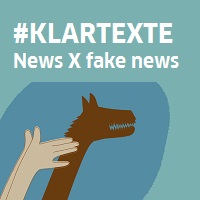
Mark Divo: Using culture as a vehicle to subvert

A new place has enriched the street of Krymska few months ago. The Solution, a quirky Biedermayer-styled living room, offers “reasonable answers for affordable prices” and an inspiring perspective on how to make things happen. The aim is to bring people together and activate the local community through cultural sharing, providing a space for art exhibitions, music events, dinners, readings, sessions, meetings, puppy parties.
We talked to the owner, Mark Divo, Zurich-raised conceptual artist and curator, who has developed the concept throughout long years of his experience with inhabiting abandoned spaces. Divo stood behind the most vibrant and influential squattings of the past two decades in Switzerland and elsewhere; member of the first group behind Berlin’s legendary alternative art hub Tacheles in the very early 1990s, squatting houses and creating temporary museums in Zurich or Copenhagen later on, painting large murals in Vienna, Košice or Prague, Mark was spreading the idea of solidary and non-commercial culture accessible to everyone. In 2002, Divo organized the occupation of Cabaret Voltaire, the cradle of the Dada movement, to protest against its planned closure; this endowed him with even greater recognition as the driving force of community-oriented cultural happenings.
Since 2005 Mark Divo has branched out to the Czech Republic, taking with him his precious collection of rubbish and exhibiting his “inhabited sculpture” in Palac Kinskych gallery, upon invitation from the Prague’s second Biennale. Since then, he has organized various large exhibitions (Proces festival in Pražská tržnice, Utopia on the Abyss art show in Veletržní palác, to name a few), founded a DIVO institute in the city of Kolín, and opened The Solution salon in Prague’s hip district Vršovice just recently.
Hey Mark, pleased to introduce you to our readers. For the start, would you give us a brief description of the concept of The Solution, or your endeavour in general?
I’m trying to build a situation, where you can have creative spontaneous things happening alongside - a meticulously planned program can allow space for improvised actions to happen, and allows other groups to participate in the creative process of appropriation. This way, the audience is given the chance to interact with the art, and like this becomes a part of the installation. It’s about bringing people together and seeing what happens. Solution is a further experiment in this direction.
I like the concept of doing things together, as a force. It is finding people who are interested in something nice. An important factor is that I don't do anything myself - I enjoy making somebody do something, talking somebody into doing something. Creating a group.
You have developed an exhibition concept called “inhabited sculpture”. What is it?
I have many things that I carry around. It’s my collection of art and rubbish, things that I found and collected over the years. Masses of things, furniture, pieces of arts, objects. But it has to include people. It needs to be inhabited.
The inhabited sculpture is a sort of a bait. Because its cozy and a kind of sentimental, and it’s playing with the Czech craving for living in the by gone world of the First republic. But it’s also subversive…
You have quite a lot of experience with squatting, but your approach seems different in many respects. One of your big attempts was, for example, to “remove the grimy aura of a squatter”, by opening the squatted houses to general public.
Yes, I used to be attracted to the ideas around the political squatter scene of the late 80s, even though many attempts I saw missed the point in my eyes. I thought that a squat should not be a place for you and your fellow addicts to smoke your crack pipe without your mother harassing you. An occupied building is a great opportunity to live for free but it should always be based on a community movement, it's an urban concept. If you want to squat a building, you are doing it with a vision of doing something within the space, find ways of opening it to as many people as possible. Art is a magnet that attracts people from all walks of life, so it seemed logical that we would try to turn the buildings that we squated into a so called “Gesammtkunstwerk”. Projects like these would involve a great many artists, and because we formed a group, it was impossible to assign the authorship to one individual person; we also defied the concept of conventional commercial art, that always try to underpin the fact that art is an exclusive commodity created by one genius artist.
What’s your relation to Dada? You were behind the famous occupation of Cabaret Voltaire, you’ve been organizing an annual Dada festival ever since…
I always say I’m anti-dada. If somebody says he’s dada, he’s definitely not. But every artist somehow draws inspiration from this. This whole idea of subverting culture, it’s very interesting. Using culture as a vehicle to subvert. What made the Dada artists famous were all the pranks, it was full of practical jokes. You have to, of course, see it in the historical frame.
Although Dadaism originates from Zurich, there were no Swiss involved in this movement - it was, in fact, a product of a large immigrant community which was stranded there because of the first world war.
What’s coming up next in The Solution?
A concert next Monday, 23rd, with Edoshův Kur-ník, SEkS , Idkfa and Qbeat. Starting on the 27.2. at 19:00, there will be an exhibition of Anna Bürgermeisterova, artist from Prague, called "no paradise for the future". It will last two weeks until March 14th.
On Thursday 12.3 we have a concert with a band from Israel called Germania Depressiva. And on the 19.3., we have a Vernissage with Ivars Gravlejs artists from Riga, Latvia. His show lasts from 19.3. - 4.4.
Thank you for your time.






